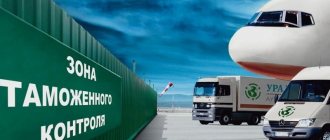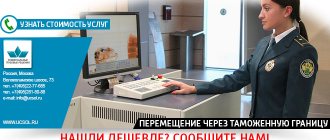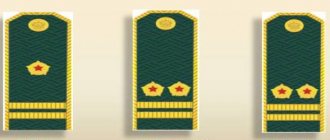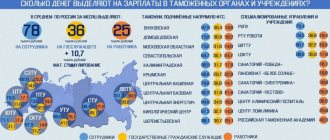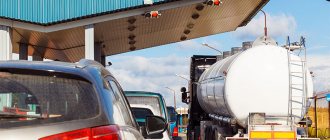Who can use it and when in 2021
The following can register their goods as supplies:
- the carrier himself;
- the party to the transaction on the basis of which the cargo is imported or exported from the country, or its representative. But this is allowed exclusively to citizens and companies of EAEU member countries!
When can this mode be implemented:
- goods are brought or exported on board an airplane, train, or water vessel;
- foreign goods from a duty-free store are declared under the supplies regime and loaded onto a plane or ship (this method is prohibited for a train).
- cargo from a customs warehouse (there is such a procedure) is registered as supplies and loaded onto water vessels (water vessels only).
For some types of property (for example, for petroleum products), maximum standards are established. Otherwise, under the guise of such a regime, some companies will have the opportunity to transport large volumes of goods for another purpose (for example, transit) and save on duties.
The essence and purpose of the regime
First, let's look at what kind of goods are considered supplies in the understanding of customs legislation. Let's imagine a passenger plane. In order for it to reach its destination, it needs fuel. You will also need food and drinks for the crew and all passengers. The same applies to water transport and trains. All things needed for the trip are considered supplies.
They can be divided into three groups:
- supplies for the operation of a vehicle (this is fuel and fuels and lubricants), this group does not include spare parts and any equipment, they are not considered supplies at all!)
- supplies for consumption (food, drinks, hygiene products and other things necessary on the way), they can be distributed free of charge or sold for money.
- supplies for sale (goods that the carrier company sells to its passengers during the flight). If you've ever flown on an international flight, you probably remember how flight attendants offer to buy perfume, souvenirs, cosmetics and other small items.
All these things arrive in Russia for the period of parking and travel, flying through its territory. Therefore, there is no point in placing them under any customs procedure. But at the same time, it is also impossible to allow goods to be imported or exported without any registration. This is contrary to the fundamentals of state security and customs rules.
That's why the supply regime was invented. Its essence is simple: the carrier or other authorized person declares all supplies upon entry into or exit from the country, indicating what kind of goods they are, how much they are and other information. Customs officers have the opportunity to check everything and eliminate possible violations.
- Using this mode makes life easier for shipping companies, because filing a declaration is easier than completing the customs procedure. And if you comply with the conditions for using supplies, you can avoid paying duty.
- There are also disadvantages. If there is an intention to use a foreign product otherwise than as supplies, it will have to be re-declared, duties paid and placed under the appropriate regime.
What is the use of supplies
After reading the article, do you still have questions? Write your question using the form (below), and our lawyer will call you back within 5 minutes with a free consultation.
How to formalize the movement of supplies in 2021
This procedure can be divided into two stages: the actual registration of the regime and obtaining customs permission for shipment. Let's look at both.
Documents and statements
In order to place a product under this regime, it must be declared. If supplies are imported into the country, you will need to issue a customs declaration for the cargo - a customs declaration.
Instead, you can present standard transportation documents (for sea and air transport only) or a free form application for supplies. Such papers will be accepted if they contain the following information:
- about where the supplies are being taken;
- about what mode needs to be applied (supplies);
- information about the vessel (No. and name);
- information about the declarant (full name, name and TIN if available);
- list of goods indicating quantity and nomenclature (can be in the form of an appendix);
- value of all property (customs).
- When exporting, goods and supplies are declared if a declaration for their import has not been submitted. Export is also formalized using a declaration or a simple application. But those goods that are planned to be sold must be declared separately.
- And one more thing: in the application for the export of supplies, you must additionally indicate the country where they are going. The application itself must be prepared in triplicate.
- For foreign and Russian goods, a declaration or application is always issued separately. A separate declaration must be submitted for different types of supplies.
Supplies can be transferred to other similar vehicles (from plane to plane, etc.). This requires customs permission. To receive it, you need to fill out an application, indicating in it:
- information about the product (what, how much and where it is located);
- when unloading, reloading is planned;
- to whom the supplies are transferred.
It is mandatory to have confirmation that the product has passed all types of control (sanitary, radiation, etc.) to which it is subject. Permission or refusal is issued within a day.
Form for registering applications for clearance of goods in accordance with the customs regime for the movement of supplies
Conditions
Registration of the supply regime is carried out where the transport with supplies arrived or from where it departed.
Conditions for moving supplies
Procedure
The procedure for registering the movement of supplies is as follows:
- Submitting a declaration or application for supplies to customs. Served at the place of arrival or departure of transport with goods.
- Checking documents by customs officers and making a decision on them. The customs officers have a deadline of 24 hours for this.
- If everything is in order, the declaration (simple application) is stamped with permission to release. They may refuse if the applicant does not comply with the conditions of the regime established by law for supplies.
- Once released, customs officers can seal the premises containing the supplies.
- At the end of the regime (when the transport leaves), the customs officer checks the documents and the quantity of the items themselves, then indicates this data on the application and puts his stamp with the date.
Regulatory regulation in 2021
Customs legislation in Russia can be conditionally divided into two blocks: international norms (documents of the Eurasian Economic Union) and internal laws with by-laws. The former have priority over the latter, which simply complement them in the unsettled part.
To register goods as supplies, you will need to look at the following legal acts:
- Customs Code of the EAEU . It is common to all members of the Union (and to Russia). There is a separate chapter dedicated to the supply mode.
- decision of the EAEU Board with a list of information that must be indicated in the papers for supplies (if they are submitted instead of a declaration).
- federal law establishing the rules of customs regulation in Russia as an addition to the code. This law does not ignore the issue of bringing supplies.
- order of the Federal Customs Service , which regulates the procedure for processing the import of supplies. The most specific document, it clearly states where and what to submit, how to formalize and other procedural issues.
We will consider all the basic rules for the import and export of supplies established in these documents below.
Items placed under supply transfer mode
Still looking for an answer? It's easier to ask a lawyer! Write your question using the form (below), and our specialists will quickly prepare the best options for solving your problem and call you back on the day you submit your application. It's free!
Cost of customs declaration of supplies
We offer 2 formats of cooperation for customs clearance of supplies.
- Importing supplies under an agency agreement means that the Onlog System company is a party to a foreign trade agreement. A detailed price list is published in the corresponding section of the site.
- Declaration “under the broker’s digital signature” is carried out under an agreement with the customs representative. The cost of services in this case is lower, since the importer and broker bear joint liability under the law.
Still have questions about customs clearance of supplies?
Write or call us to clarify information and place your application!
Responsibility and consequences
If the declarant violates the terms of use of supplies (for example, ships them to third parties without customs permission), he will have to pay duties on the goods calculated at the maximum (at rates for domestic consumption without any benefits or preferences).
It is convenient for companies performing passenger transportation to register goods as supplies. Without its use, moving people across the border of our country would be significantly more difficult. After all, then the things needed along the way would have to be processed each time under some procedure and duties and fees would have to be paid for them. This regime can be called preferential, it is convenient to apply for and it is not even necessary to fill out a complicated declaration.
Features of customs operations regarding supplies are discussed in this video:
Features of customs clearance of supplies
Key aspects of the movement of supplies are established by Chapter 39 of the EAEU Customs Code. The unusual thing about customs clearance of supplies is that they go through without being placed under the procedure. That is, supplies are declared and released without the usual declaration of the customs procedure, but with only the direction of movement indicated (import / export). Supplies can be declared by:
- carrier/forwarder;
- a resident of the EAEU who has the right to own, use or dispose of goods;
- a resident of the EAEU on behalf of or on whose behalf the transaction was concluded;
- a resident of the EAEU who entered into a transaction in relation to foreign goods located in the customs territory of the EAEU;
- owner of a duty-free store - in relation to the goods of this store loaded on board aircraft and water vessels.
Supplies are divided into:
- Union goods are items exported from the territory of the EAEU and imported back, subject to their identification.
- Foreign goods – all other imported (including those not identified as goods of the Union) and exported foreign goods.
You cannot declare Union goods and foreign goods in one document at the same time. The same rule applies to the indication in 1 DT of supplies for operation, consumption and sale - they must be declared separately. Any supplies, regardless of their status, are not subject to customs duties. The criteria for classifying supplies as goods of the Union and foreign goods will be useful if for some reason the condition for the intended use of goods is violated (for example, a purchase and sale transaction will be made in relation to them by legal entities) and an obligation to pay duties, VAT, excise taxes and fees arises . There is no need to declare supplies if they are on board the arriving aircraft and will be removed by the same aircraft without loading and unloading operations. A goods declaration is submitted in all cases of loading, reloading and unloading of supplies from a vehicle. In some cases, customs will accept an application for supplies as a declaration of intent for supplies if it states:
- direction of movement of goods;
- purpose of movement of goods;
- vehicle identifier (vessel name, aircraft tail number, train number);
- declarant (name and TIN);
- it is accompanied by a list of goods, their quantity, customs value (only for sold supplies).
Periodic declarations may apply to supplies. Goods previously placed under other customs procedures can be declared as supplies:
- duty-free trade - if they are loaded at the point of departure on board aircraft or ships;
- customs warehouse - if these are materials necessary for the normal operation and maintenance of water vessels that are exported from the customs territory of the EAEU.
All applicable prohibitions and restrictions apply to moving supplies.

